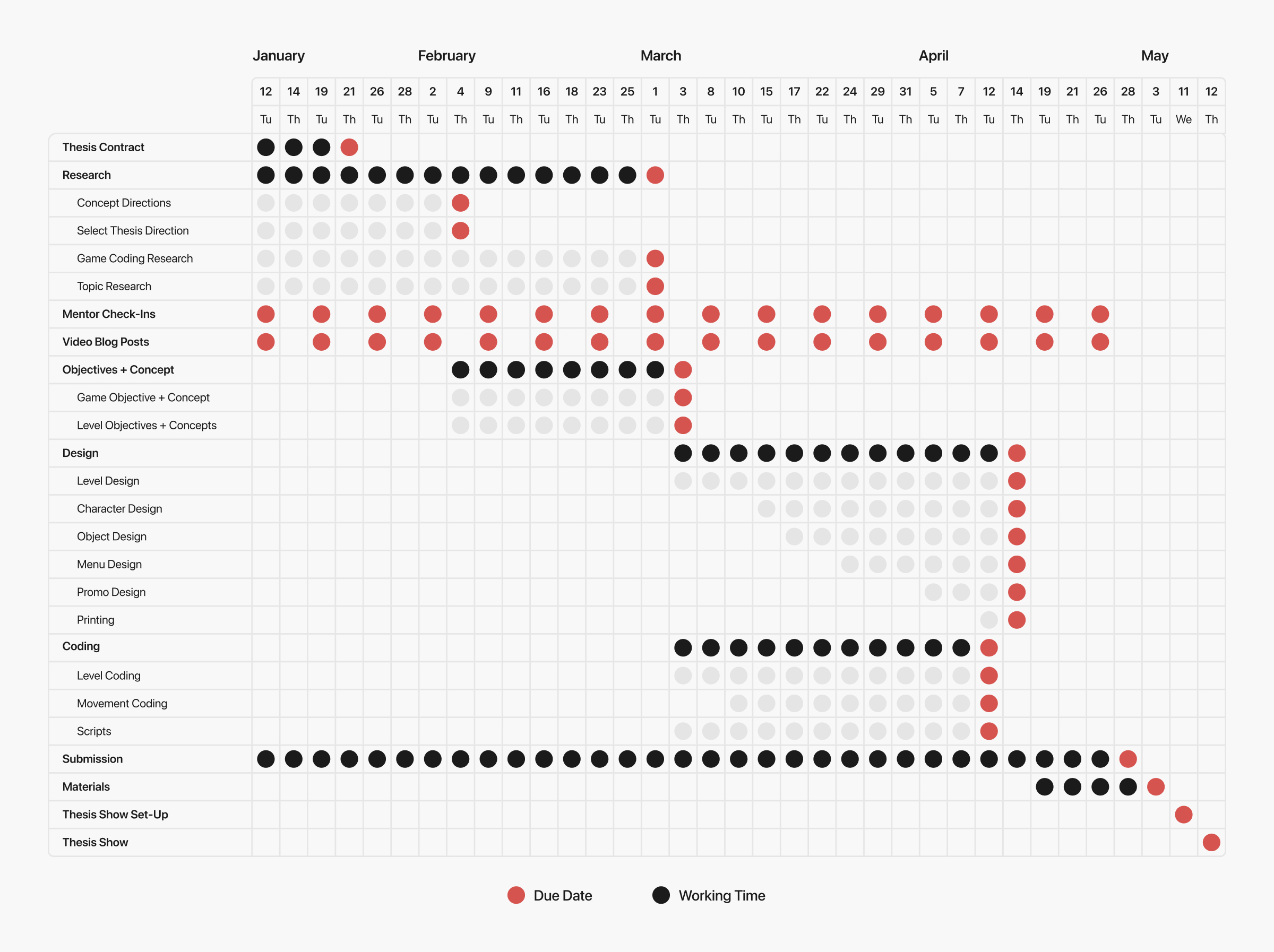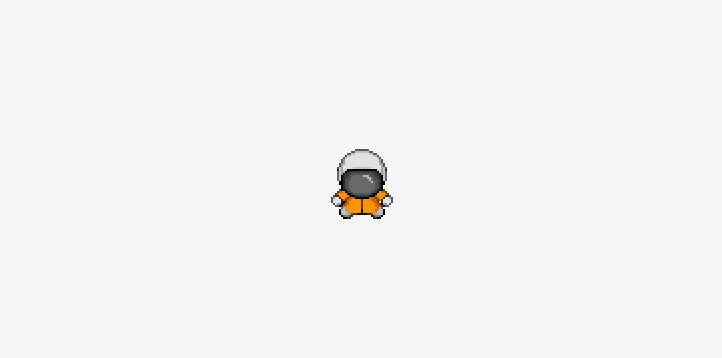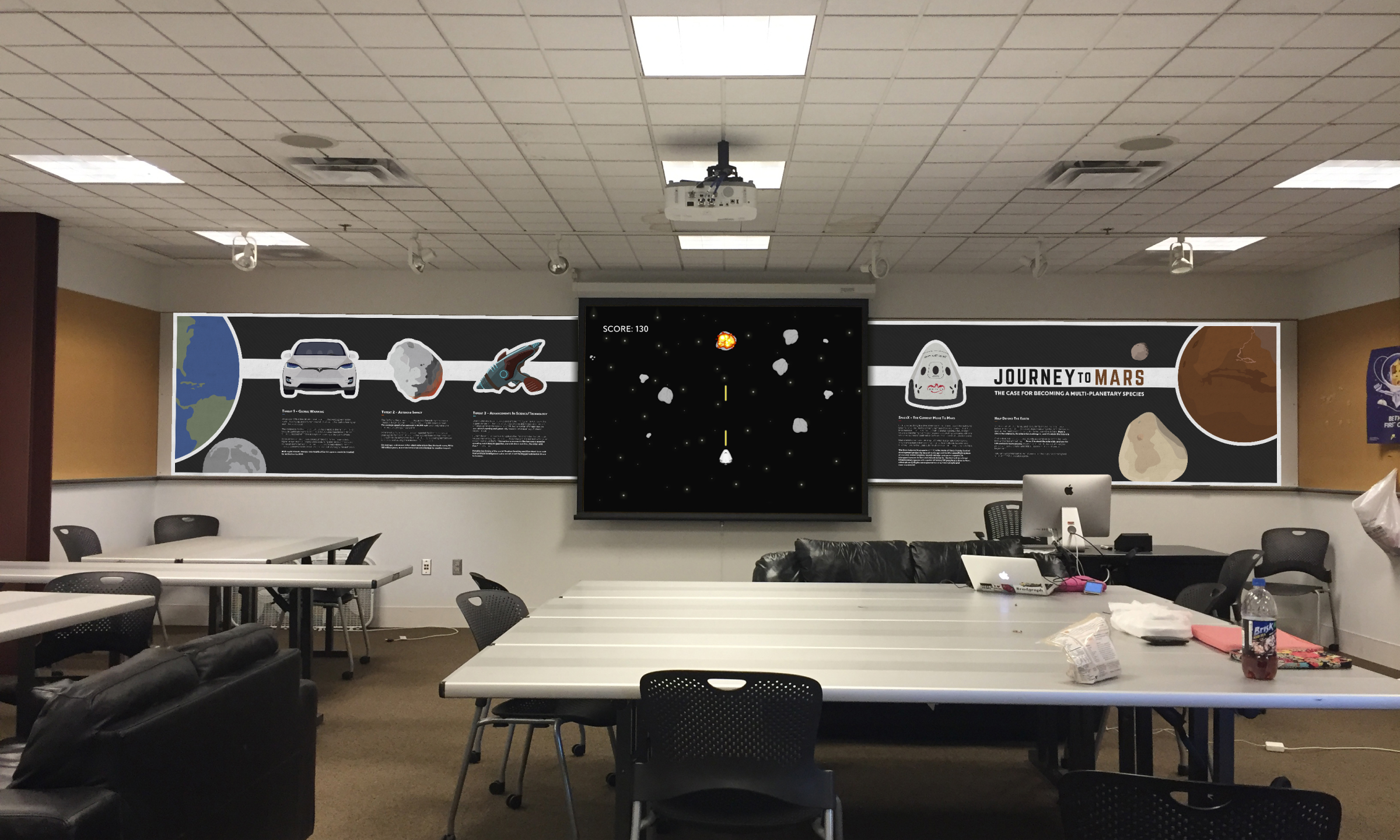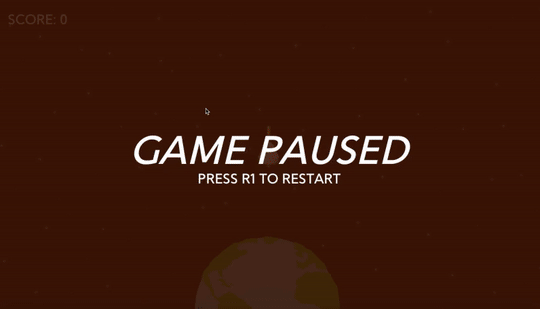
.jpg)
I used my Senior thesis project as an opportunity to explore and educate on a topic I've been passionate about since I was little - colonizing Mars. The project allowed me to branch out a bit and try something that I hadn't done during my previous years of college, which was video game design. I created a video game and mini exhibition focusing on the threats to the human species, and why we need to colonize Mars and beyond before it's too late.
This project was awarded the 2016 CCAD Chroma Chair’s Award (Best of Show) by CCAD's Chair of Design. I got a fancy, cool plaque.
The Earth is within a cosmic shooting gallery; crucial species are dying out; we’re on the verge of another super-volcano eruption; and we’re unintentionally heating up our thin layer of atmosphere. We’ve also made nuclear bombs, and although we are smart enough to have created these weapons, I’m not sure we’re smart enough not to use them. The threat of extinction is real, and it’s time to take the necessary steps in securing the future for the human species. Mars is where the science is, it’s where the challenge is, and it’s where the future is.
Research
Art Direction
Video Game Sprite Design & Assets
Illustration
Visual & Verbal Presentation
Enviromental Design
Using tutorials and help from my peers, build a video game highlighting on the very real threats to the human species. Create an experience for people that is both exciting and informative - something they can interact with that will introduce, if not increase the sense of importance in space exploration and our obligation to colonize Mars.
The general idea was there - I just needed to break it down into something presentable and entertaining. Why should people care about colonizing Mars? What are the actual threats if we remain isolated on Earth? How can I break down the complex sciences of space travel into a cute, fun game? What would I name my boat if I had one? Should I start working out again? I was asking the important questions, but only applied answers to the first three on this project.
Communication
The first step was making sure I had an accurate understanding of the topic before developing the concept of the game. I’ve done a lot of preliminary research over the years through my own self-interest, but I wanted to work with someone who lived and breathed space exploration and astrophysics – I was put in contact with Dr. Dan Durda, a research associate at the Lunar and Planetary Laboratory at the University of Arizona. My conversations with Dr. Durda helped in the development of a communication plan - how I could properly present the ideas and information about colonizing another planet.
The Game
Next, I needed to figure out the premise of the game. A lot of information needed to be absorbed quickly so it could reach as many people as possible within the duration of the thesis show. I decided to focus on the very real threat of an asteroid impact. The idea would be to fuel your spacecraft at a planetary gateway located on the moon, defend Earth from a barrage of asteroids, and then head to Mars (or so it seemed).
The Experience
The game would be projected on a large screen, with a couch positioned in front of it. High scores for the second stage of the game (Earth Defense) would be recorded on a scoreboard, with the winner receiving a prize at the end of the show. Around the screen, I wanted to create a set of posters to highlight the dangers to the human species, such as asteroid impacts, climate change, and on the extreme (but not impossible) level - alien invasions.
Once I figured out the concept for the game and the overall experience for the players, I created a list of elements I wanted to include.
What To Include:
Posters Highlighting 3 Threats to Humanity
Poster Highlighting Current Plans for Mars Colonization
Video Game on Projector Screen
PlayStation 4 Controller Support
Scoreboard
Prize: "The Martian (2015)" on Blu-Ray (featured Academy Award Winner, Matt Damon)
Creating a Project Schedule
After determining what needed to be included, I broke down everything into smaller action items along a structured schedule. This Gantt chart helped me stay on task, and was a good reference for the items I needed to complete before the May 12th deadline.

Being that I spent nearly 42.36% of my childhood playing Pokemon on Gameboy, I felt it was necessary to integrate a pixelart illustration style into this game somehow. I began with the design of the main astronaut character that the player would navigate around the moon and into their spacecraft.
Once I finalized the design for the astronaut character, I began work on the additional sprites in the game - asteroids, spacecraft, background textures, moon base, equipment, and more.
After completing the designs for the in-game sprites, I moved onto animation. To speed things up, I created quick examples within Adobe After Effects, which provided a good reference during its recreation in Unity.

Simultaneously, I began working on the posters surrounding the projector - these provided information on three possible threats to the human species (climate change, asteroid impact, and alien invasion), as well as information on current plans for colonizing Mars. Below is a very early mockup on what the exhibit setup looked like:

After four months, I completed all of my research, game development, and set up for the show. The final video game concept was a simple, informative mini-RPG and space shooter. It contained the following premise:
Game Objective
Perform In-Situ Propellant Production (ISPP) on the moon before setting off to defend Earth from a barrage of large, doomsday-sized asteroids.
Stage 1 - Fueling
Navigate the astronaut character around the Moon to collect ice. Extract hydrogen and oxygen from the ice to create propellant, then use that propellant to power the Earth Defense Ship 3000.
Stage 2 - Earth Defense
Board the spacecraft and fire the rockets at asteroids heading towards Earth. Hitting asteroids would break them into small enough fragments to burn up in the atmosphere, preventing an impact to the surface. Over time, the asteroids increased in size and speed, and the player would inevitably realize there is nothing they could do to save Earth.
The game was challenging and allowed players to achieve a higher and higher score, but was ultimately un-winnable. The point of this was to highlight that there are planet-destroying asteroids out there - it's just a matter of time until we detect one heading towards Earth. All of this to illustrate that we need to have a second (third, fourth, etc.) home to ensure the longevity of our species.
